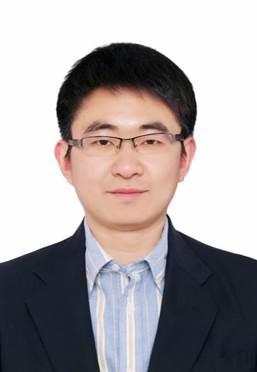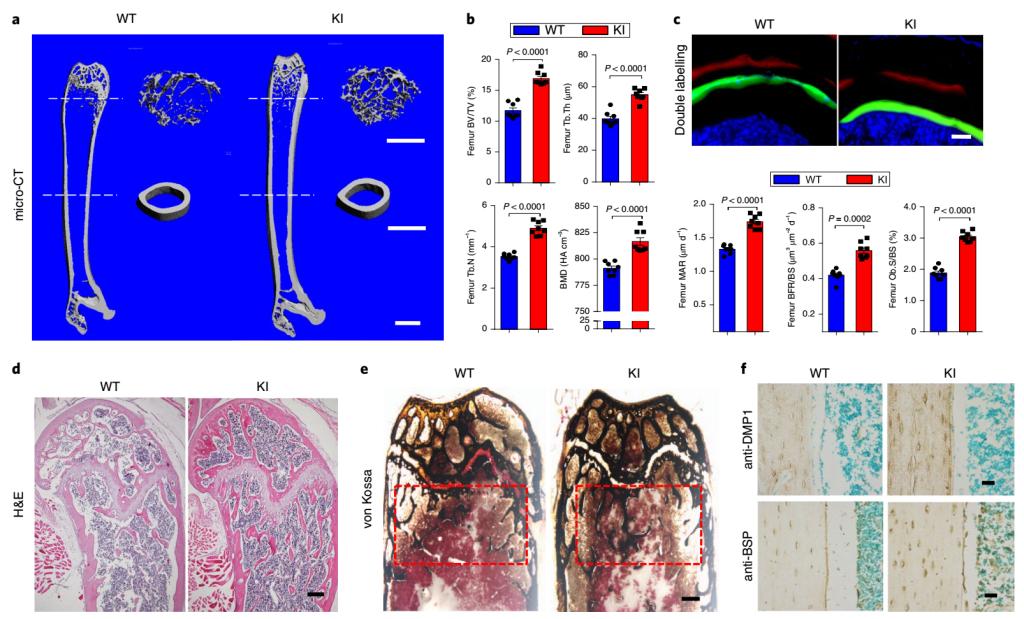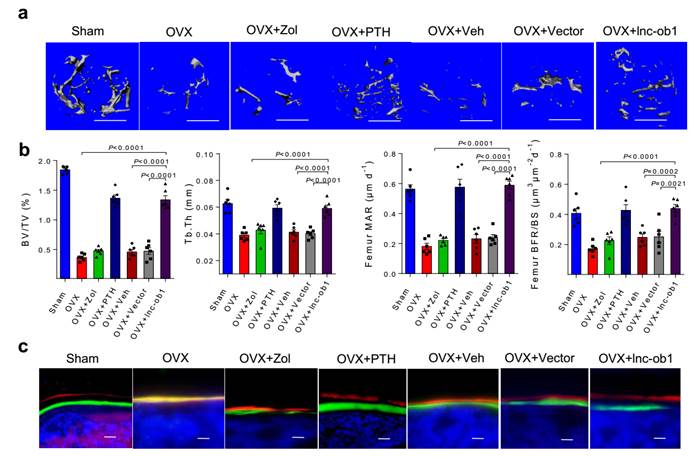With the acceleration of aging of Chinese population, the incidence of osteoporosis in people over 50 years old is as high as 19.2%. Cooperating with other teams to research into this disease, the team of Prof. Wang Xiaogang from Beijing Advanced Innocation Center for Big Data-Based Precision Medicine of Beihang University has brought good news for many osteoporosis patients. A research article titled “The Long Noncoding RNA Lnc-ob1 Facilitates Bone Formation by Upregulating Osterix in Osteoblasts” was published online in Nature Metabolism on April 8, 2019. It is the first time that a team of Chinese scholars publishes research article in this journal.
Excellent Academic Performance of Prof. Wang
Wang Xiaogang, the team leader, has conducted precision medicine research of bone degeneration over the long term and established a research system of nucleic acid drugs: targeted screening – delivery of the cell specific – targeted conversion application. He has published 28 articles in journals indexed by the Science Citation Index (SCI) as the corresponding or first author, with representative papers in international academic journals such as Nature Medicine, Nature Metabolism, ACS Nano, Nature Communications and JBMR, therefore, he has been supported by the Excellent Youth Program for his achievements.

Medical Problems to be Solved
The research published in Nature Metabolism indicates that osteoporosis is mainly caused by the declining capacity of osteogenesis. Parathyroid hormone (PTH), the only approved clinical drug that can effectively promote bone formation at present, has drawbacks such as two-year useful life, insensitivity to fracture treatment and potential risk of causing osteosarcoma. Therefore, new strategies and mechanisms are urgently needed to solve the difficulties in the development of bone-forming drugs.

The team of Prof. Wang begins to pay attention to the long noncoding RNA (lncRNA), in order to update the treatment for osteoporosis. lncRNAs, the most abundant type of RNA in vivo, are increasingly found to affect cellular functions, organic development and many diseases. Its function and mechanism in diseases, however, are still unclear. Although lncRNAs are proven to be involved in the maturity of osteoblast and the osteogenic differentiation of precursor cells and mesenchyma stem cells in vitro, it remains unclear whether it affects bone metabolism and regulates bone formationin vivo. To discover the conservative lncRNA that can promote bone formation in vivo and make it into a drug target for the treatment of osteoporosis has become their research direction.
A total of 3 teams collaborated to undertake the research covering big data transcriptomics, molecular biology and some other disciplines. Among all the teams, Prof. Zhang Gong from Jinan University selected the candidate targets; Prof. Sun Yao systematically and completely evaluated the bone phenotype of genetically engineered mice; Prof. Wang Xiaogang identified the proper disease process and key subjects, discussed the mechanism of medicine at work, built osteoblast-targeted drug delivery carrier, discovered and verified a drug target for the treatment of osteoporosis.

It is a hard process to discover lnc-Ob1, a novel type of molecular regulating bone formation. The researchers aimed to find a targeted molecule with osteoblast-specific knock-in that could increase bone mass for the treatment of osteoporosis. Therefore, they made use of bone marrow stem cells (BMSCs) as differentiation, then performed a deep transcriptome sequencing of the cells before and after differentiation transcripts using chain-specific library building technology, and obtained over 600GB of raw data, 200 times as much data as that from a general test. By analyzing the data with FANSe3, a self-developed algorithm, the research group identified a kind of specific-upregulated lncRNA in the body of both human and mice (named lnc-Ob1 or lnc-OB1) after the systematic evaluation of these differentially expressed lncRNA in terms of sequence similarity, temporal expression, genetic organization and so on. According to their further research, the expression of lnc-ob1 in osteoblasts of the elderly was down-regulated as they age, and the expression of lnc-Ob1 was also down-regulated significantly in ovariectomy and osteoblasts of aged mice. These findings reveal the significant role of lncRNAs in bone formation, and demonstrate the bone-tissue-specific lncRNA as a potential strategy for the treatment of osteoporosis.

The team discovered that lnc-Ob1, a molecule with osteoblast-specific expression, has a weaker effect on the other tissue cells than on parathyroid hormone (PTH). They developed the osteoblast-targeted delivery technology to reduce the side effects to a very low level. In addition, they explored the drug target in a new way, which will revolutionize the treatment of human diseases.

Contribution to the Motherland
The team will focus on the analysis of the safety of targeting gene therapy based on lnc-OB1 in order to rapidly apply those research results to clinical practice. Besides, lncRNAs are the treasures of biomedical research, so a number of candidates found in previous researches will be exploited and verified thoroughly by them next. Prof. Wang stressed that the curative effect is meaningful only if it is safe. Osteoporosis is a degenerative disease and can be delayed but not reversed. Medical workers, however, should endeavor to reduce the risk of osteoporosis fracture and enhance the quality of patients’ life.
Prof. Wang attaches great importance to the needs of patients, which is inseparable from his strong patriotism and sense of social responsibility. As a native scholar, he hopes his students can contribute to our country. The fact that the vast majority of drugs are now monopolized by foreign countries, which has brought huge burden to the country, makes him feel deeply distressed. He considered that scientific workers should not only face up to the gap between China and other countries, but also keep the national confidence. “Our hardware platform is not inferior than that in foreign countries, and what we need is patriotism and perseverance. We are supposed to develop the precision medicine with Beihang characteristics based on domestic efforts, and incorporate our research into the general trend of development of Beihang University. We are striving to become a pioneer in the field of biomedicine,” said Prof. Wang.
The research article:
http://www.nature.com/articles/s42255-019-0053-8
Written by Li Xinxin
Edited and translated by Lu Baihui
Special thanks to Beijing Advanced Innocation Center for Big Data-Based Precision Medicine of Beihang University
Reviewed and Released by GEOOS
Please send contributions to geoos@buaa.edu.cn

